
There are many different types of keyboards in the world. There are wired or wireless keyboards, mechanical keyboards and membrane keyboards. However, you will also find gaming, projection, handheld, and ergonomic keyboards, among others.
I've been working with computer hardware for several years now, and during that time, I've gained an interest in the history and potential future of PCs and their accessories. I've had hands-on experience with many different types of keyboards over the years. I've put together this guide to tell you about the kinds of computer keyboards out there.
If you want to educate yourself about the types of keyboards out there, this is the article for you. Let's get right into what you need to know.
Contents
It's hard to classify computer keyboards under a single broad category. This is because there are so many different ways you can categorize them.
Don't worry though, I'll show you how to classify computer keyboards and tell you more about all the different types.

There are many ways that computer keyboards can connect to your computer. This is one of the ways you can categorize them.
However, when you look at a computer keyboard in the scope of its connectivity options, you will come up with two major categories: wired and wireless.
A wired keyboard connects to a computer using a wire.
There are different types of computer keyboards that use wires, but the most common type is the USB keyboard. This computer keyboard connects to your PC using either USB-A or USB-C.
You can also consider the wired keyboards that connect using a PS/2 port, but in this day and age, these are obsolete. However, they were the predominant wired keyboard type before the USB keyboard came along.
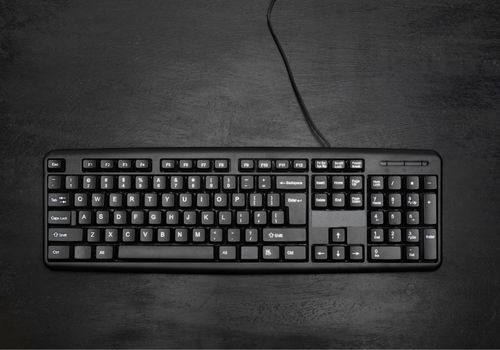
Wireless keyboards connect to your computer without you needing to rely on wires which can get in the way.
There are two major kinds of wireless keyboards. These use either Bluetooth or radio frequency (RF).

When you look at the types of keyboards available, one of the more functional ways to classify them is based on the type of key switches they use.
A key switch can be thought of as the mechanism underneath the individual keys on your keyboard that allows it to register your input.
The two broad classes here are the mechanical keyboard and the membrane keyboard.
A mechanical keyboard uses individual mechanical switches underneath each key.
For computer enthusiasts, this type of computer keyboard is held in high esteem. They tend to be constructed quite solidly and give the best typing experience. However, they are relatively large.
Another benefit of a mechanical keyboard is that there are different kinds of key switches available, each with a different tactile feel. You can choose the one you like best, and even replace switches on some mechanical keyboards.

A membrane keyboard is the major opposite of a mechanical keyboard. Membrane keyboards use a single membrane that spans under all the keys.
As a key is pressed, it depresses the section of the membrane beneath it, which makes contact with a conductive layer and registers the key press.
Most keyboards in laptops are membrane keyboards since they can be built slimmer than a mechanical keyboard. Typing on them also requires less pressure, which for some, is more comfortable.
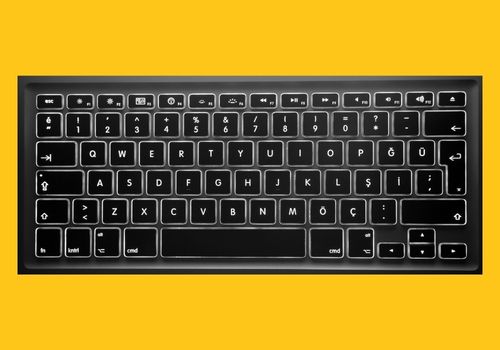
Learning the different types of computer keyboards based on how they connect to your computer or the kind of mechanism they use doesn't cover the wider range of keyboards that are out there.
As a result, I find it helpful to classify the kind of computer keyboard you have based on major features that serve as selling points.
There are several types of computer keyboards we can take a look at when we use major features, so let's take a look at a bunch of them.
If you are an active PC gamer, you'll know how vital your computer keyboard is. There are many ways that your keyboard can bring an edge to your gaming, which is what gaming keyboards focus on.
There are several features that gaming keyboards have to help your gaming sessions, making them stand out from the standard keyboard. Here are some of them below:
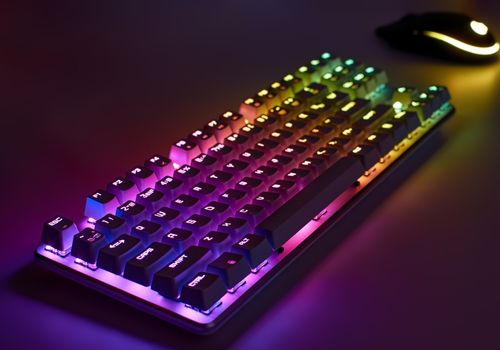
Flexible keyboards are a type of keyboard that you're not likely to see around frequently.
A flexible keyboard tends to have the same keyboard layout as a standard keyboard, except it is capable of being folded or rolled up. This is thanks to being entirely made of soft materials like silicone.
These keyboards are great for people who need a portable physical keyboard to take around with them. The average flexible keyboard is also water and dust-resistant, which is a great perk.
However, due to how soft they are, the typing experience might leave quite a bit to be desired.
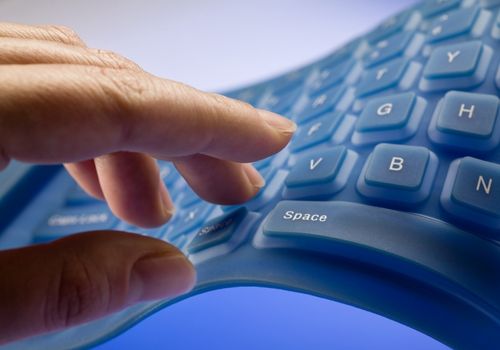
As the name suggests, an ergonomic keyboard is meant to be ergonomic. Here, your comfort is the number one consideration. Even if you've been typing for hours, an ergonomic keyboard will be more comfortable for your hands and wrists than a regular keyboard.
With so much focus on comfort, ergonomic keyboards can sometimes come out looking quite funny. For instance, they may separate the left and right sides of the keyboard so your hands are in the most natural position.
Ergonomic keyboards can be a bit tough to get the hang of though, as their keyboard layouts are a variation of what most of us are used to.

The term "virtual keyboard" sounds high-tech and like something out of a sci-fi movie, but it is something almost all of us use every day.
A virtual keyboard is simply a keyboard that doesn't exist physically. Yes, that means your smartphone or tablet computer keyboard is a virtual keyboard!
Virtual keyboards give us a way to interact with our devices, though the lack of tactile response can take some getting used to.
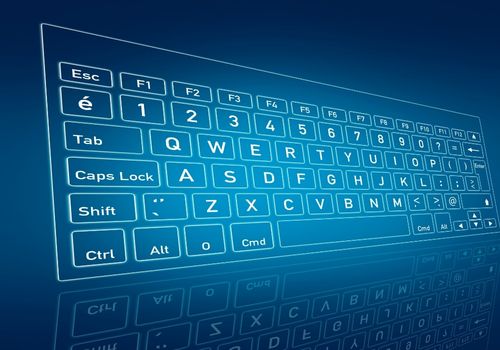
The multimedia keyboard became popular in the early 2000s when the internet was becoming mainstream for all ages.
What characterizes a multimedia keyboard are the multimedia controls you will find on the keyboard, usually in its topmost row. This includes buttons to play, pause, skip, and stop music. Some add buttons to open your email, launch your browser, and so on.
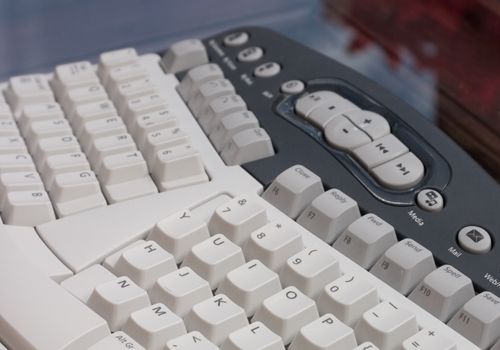
Even if you're a keyboard enthusiast, there's a possibility that you've never seen one of these in person.
A projection keyboard projects an image of a keyboard layout onto a flat surface. All you need to do is type the keyboard keys that are on the flat surface in front of you.
Despite how advanced this tech is, the projector doing all the processing tends to be rather portable - about the size of a smartphone. This makes them a great option if you need a portable keyboard.
Of course, the major downsides are that you can't feel the keys as you type. You also need to make sure that you are in a well-lit room. Otherwise, you won't even be able to see your keyboard.

Handheld keyboards are some of the oddest-looking computer accessories you will find. A handheld keyboard has a section of a desktop keyboard packaged as a standalone product, which is great for people who do not need an entire keyboard for certain things.
They are rarely used for actual typing like on a QWERTY keyboard, but rather for specialist uses. For instance, a gamer might use one of these to save space on their desk, especially if they only use a small section of their keyboard while gaming.
Another use is for people who work with numbers a lot. You can get a numeric keypad on its own, without needing to buy an external keyboard to go with it.
Even though they look strange, handheld keyboards can be very comfortable once you get used to them.
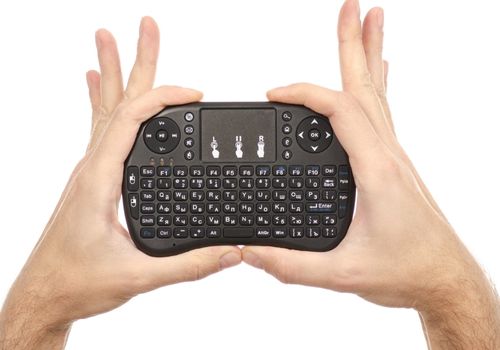
A laptop keyboard doesn't have anything in particular that makes it stand out, apart from the fact it needs to be small enough to fit into a laptop. Fortunately, keyboard technology has made this possible.
Apart from being a laptop-sized keyboard, this type of keyboard is versatile. You can get one that's a non-backlit or backlit keyboard. The high majority are membrane keyboards too, while a few are mechanical.
Many laptop manufacturers go for the "chiclet" keyboard look, which separates all the keys and makes them look like islands. This is why it's also known as an "island-style" keyboard.

Chorded keyboards are uncommon, yet they have been around in some capacity for several decades now. Getting the hang of one can seem daunting, which is why most people don't try.
A chorded keyboard forms characters and words when the user presses buttons in specific combinations. Pressing any two keys together can provide a number of words.
The learning curve to use these is steep. However, if you're all about typing speeds and Words Per Minute (WPM), it might be worth learning as you can increase your strength greatly.
However, they are usually relatively portable, which allows you to take them along no matter where you go.
The vertical keyboard is perhaps the most niche entry on this list. It looks like a keyboard that has been bent 90 degrees into spots, with two parts of the keyboard pointing upwards.
The keyboard looks very strange, but the idea behind it is that it's ergonomic. Since two parts of the keyboard are vertical, you don't need to move your hands out of their neutral position.
Those who recommend this keyboard are particular about how comfortable it is. So it might be worth giving it a try for those frequently dealing with wrist and hand pain.
If you need a keyboard that you can easily carry around when you're on the go, a portable mini keyboard is the best choice.
This has all the essential keys of any other wireless computer keyboard, but it squeezes everything into a handheld package that can be used with all sorts of devices.
Your portable keyboard may also come with a touchpad that you can use for quick and easy navigation.
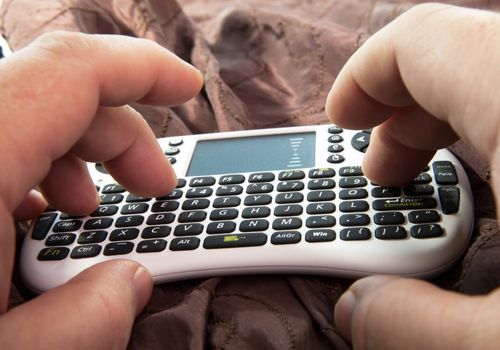
If you're trying to buy a keyboard for your setup, it can be hard to know which kind is best for you.
While the major features you need in a keyboard are dictated by the work you do on your PC, you might be torn between choosing wireless keyboard models or a mechanical keyboard.
Here are some tips to make this easier:
As long as you use a QWERTY keyboard, it's easy to find keyboards of different kinds. Whether you want the clunky, deliberate feel of the keys on mechanical keyboards or the quiet, clean experience of a membrane keyboard, you have several options.
Keyboards can also be grouped based on their major selling point, which can include things like projection, gaming, ergonomic, and multimedia keyboards. Sometimes, it is as simple as having a wire that plugs into a USB port or whether they can be used through RF or Bluetooth connectivity.
Did this article show you the many different kinds of keyboards you can find? Take a look at our related articles to learn more.
